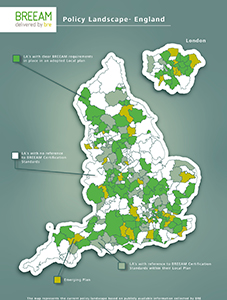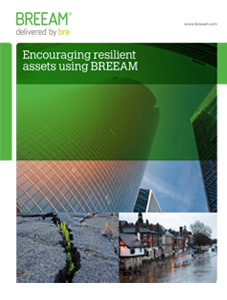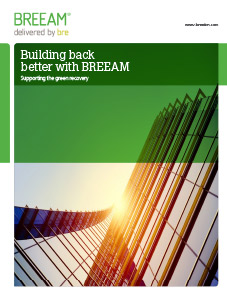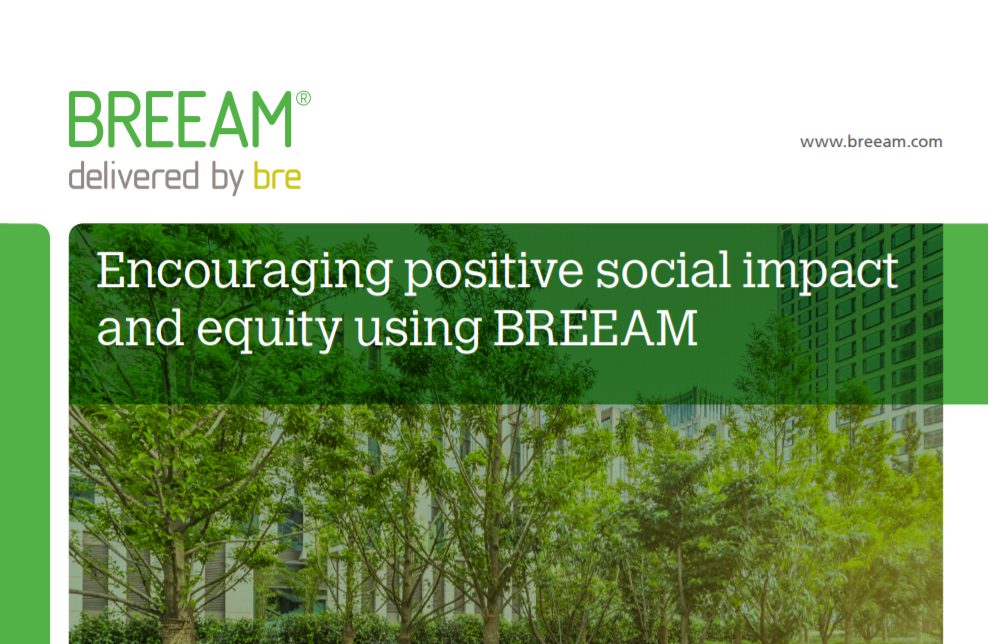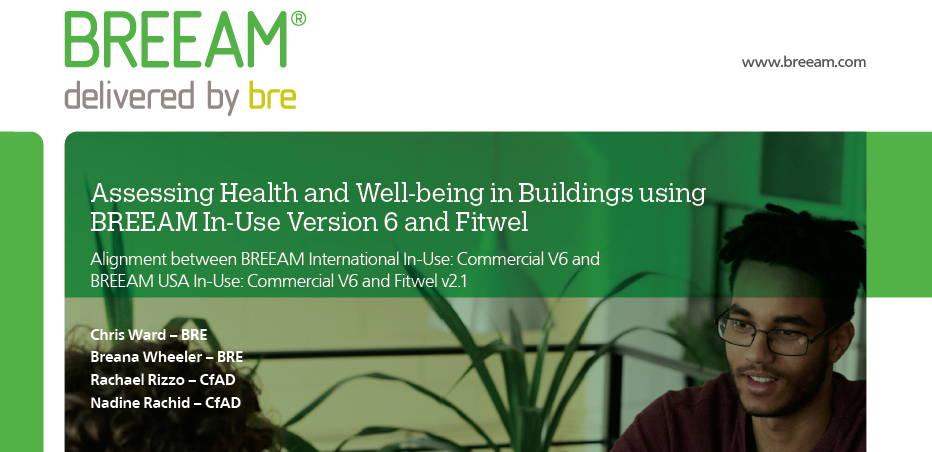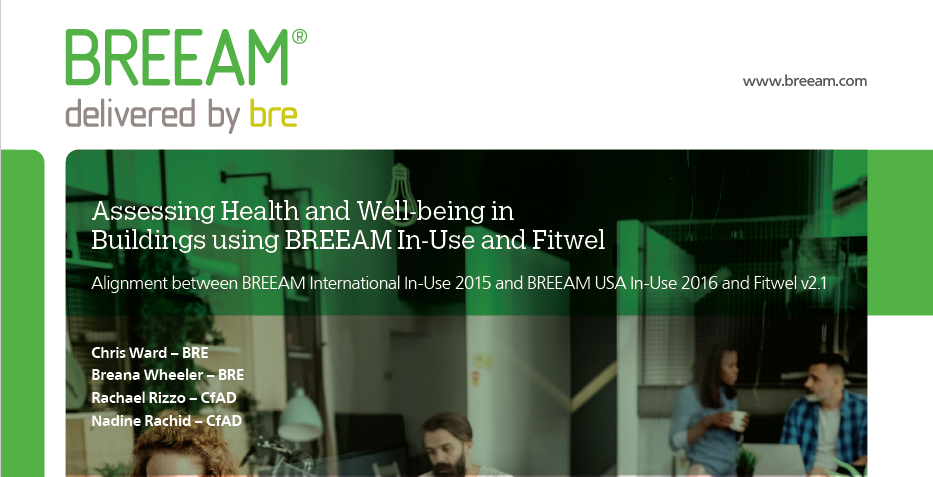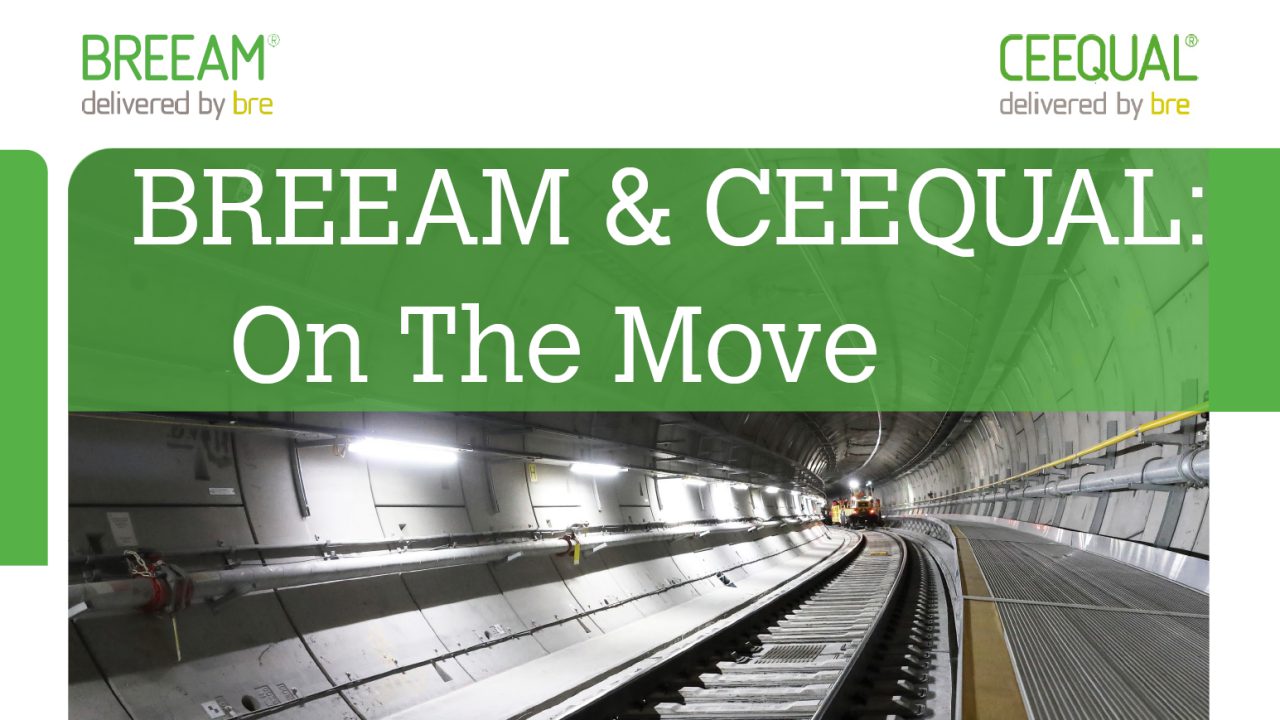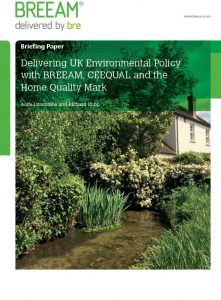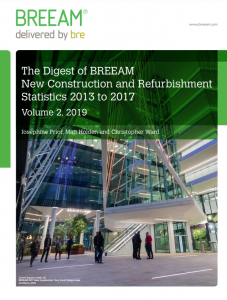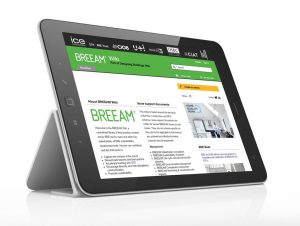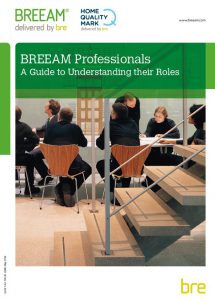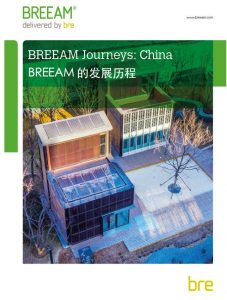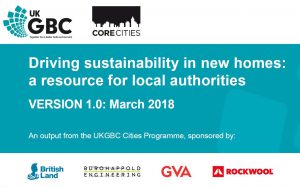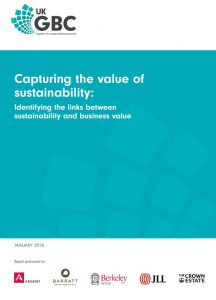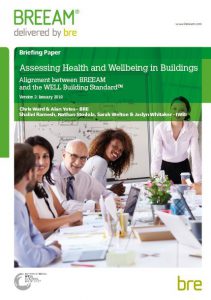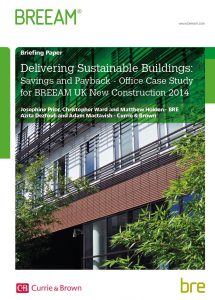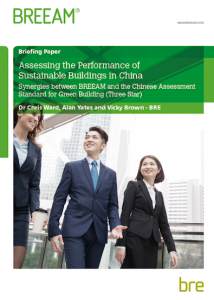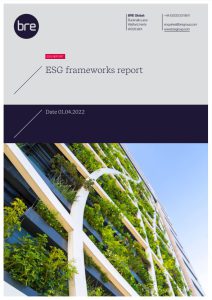BREEAM Resources
This section is a library of resources, containing briefing papers, videos and guidance notes and documents each covering a specific area relevant to BREEAM. For ease of access the resources are arranged in to the topics of strategy, value, technical and application and more recent and popular publications are highlighted below. Select the topics that interest you using the links below and find out more about the detail behind the science, content, use and future direction of BREEAM standards.
Highlights
BREEAM Policy Landscape – England
Many local authorities in the UK recognise the benefits of BREEAM and have adopted our holistic framework for sustainability in the built environment. Specifying BREEAM in local policy gives planners, developers and building users assurance of the sustainability, quality and social value of their assets.
This map gives a snapshot of the policy landscape in England, visually identifying where the different local authorities of England have varying levels of BREEAM requirements in their local plans. Wales and Scotland local policy landscape maps will be released soon.
Encouraging resilient assets using BREEAM
The physical risks and impacts climate change poses to the built environment are no longer theoretical but beginning to impact assets and portfolio values. Leaders of the industry are also beginning to better appreciate the urgent need to understand and manage the risks and opportunities related to the transition to a low-carbon economy. The purpose of this paper is to bring together elements of resilience from different BREEAM standards and lifecycles and to present our vision for this topic moving forward. It also aims to demonstrate the resilient characteristics of BREEAM certified assets and the value to be gained when assets identify and manage risks related to climate change and other challenges.
Building back better with BREEAM; Supporting the green recovery
The COVID-19 pandemic has caused an unprecedented public health crisis and the most significant shock wave since the Great Depression, exposing weaknesses in our economy and society. This briefing paper explores how BREEAM can support the built environment to build back better as we rethink, restructure and reprioritise how our society works. This paper is the first in a series, giving an overview of how BREEAM provides solutions for the green recovery in terms of Net Zero Carbon, Circular Economy, Health, Social Impact, resilience, Natural Environment and Quality and Whole Life Performance.
Encouraging positive social impact and equity using BREEAM
The expectation that the built environment should create tangible benefits to society has become widespread. Investors, owners, governments and other stakeholders increasingly recognise the need to better understand the social impacts from the built environment. The purpose of this paper is to set out BREEAM’s understanding of social impacts, value and equity from a built environment perspective and to outline how the BREEAM family of standards address social impacts both now and in the future.
Alignment between BREEAM International In-Use: Commercial V6 and
BREEAM USA In-Use: Commercial V6 and Fitwel v2.1
BRE and the Center for Active Design (CfAD) have been collaborating since 2017 to encourage asset owners and managers to promote occupant well-being and support healthier communities. This document provides assistance for those wishing to obtain both acertified BREEAM In-Use rating and a Fitwel rating under the Existing Building pathway. It provides guidance on the areas where assessment under one method can result in efficiencies in assessment under the other. This document is the first published crosswalk for BREEAM In-Use: Commercial Version 6 (International and USA) and Fitwel 2.1.
Alignment between BREEAM International In-Use 2015 and BREEAM USA In-Use 2016 and Fitwel v2.1
BRE and the Center for Active Design (CfAD) have been collaborating since 2017 to encourage asset owners and managers to promote occupant well-being and support healthier communities. This document is an update to the first edition, published in 2017, to reflect the significant updates made to the Fitwel standard since this date.
BREEAM & CEEQUAL: On the move
Across the globe people are living increasingly urbanised lives – by 2050 an estimated 70% of the world’s population will be living in cities. Transport networks providing access and mobility to, from and around these cities will continue to be a significant part of their growth. This publication takes a look at how BREEAM and CEEQUAL have helped city and town planners deliver better, and more sustainable, transport systems for their communities.
BREEAM & HQM: No Place Like Home
Recent research by the international Monetary Fund confirms that global housing markets are steadily climbing, with housing prices growing faster than incomes in over half the countries surveyed. The supply of affordable and safe housing has not kept up with the insatiable demand for housing stock. For real estate, when demand outweighs supply, standards almost certainly begin to drop. This publication takes a look at how BREEAM and HQM have helped designers to deliver quality so far, and what we need to do next, for better homes for everyone.
Delivering UK Environmental Policy with BREEAM, CEEQUAL and the Home Quality Mark
This paper gives a brief background into the UK Environmental Policy set out by the Department for Food, Agriculture and Rural Affairs (DEFRA) in the 25-year plan. The 25-year plan outlines the action which the government aims to take in the next 25 years to reduce the effects and mitigate the causes of climate change for the future, while also tackling the increasing housing crisis and preserving the natural environment. This briefing paper highlights the contribution that BREEAM, CEEQUAL and the Home Quality Mark can make to the delivery of this.
The Digest of BREEAM New Construction and Refurbishment Statistics 2013 to 2017
Volume 2, 2019
This publication is the second in a planned series whose purpose is to describe the uptake of BREEAM in a broad UK and international market during the five calendar years 2013 to 2017. It follows the publication in 2014 of ‘The Digest of BREEAM Assessment Statistics Volume 1‘, which covered the period 1990 to 2012.
BREEAM Wiki
The BREEAM Wiki is a centralised library of guidance and best practice created not by BRE but by users and other key stakeholders of BREEAM schemes and tools, including HQM and CEEQUAL. Anyone can contribute and the Wiki aims to:
- Disseminate best practice and lessons learnt
- Make it very easy to share
If you are keen to promote knowledge sharing in the industry generally why not join our Knowledge Sharing Ambassadors group. See the Wiki home page for details.
Greening the Built Environment
The Benefits of Selecting Ecological Options
This briefing paper summarises a variety of ecology-focused alternatives to standard commonly specified built environment solutions and their potential associated sustainability benefits. It aims to highlight the relevance and availability of more ecologically sensitive options to standard specification solutions and so encourage the investigation of viable alternatives for projects, developments or assets. Its purpose is to help inform clients, developers and project teams making design and specification decisions for building or infrastructure developments, as well as landlords and facilities / asset managers making management, maintenance, refurbishment or retrofitting decisions.
There’s no place like a BREEAM Home
Sustainable homes and communities are often sold on exciting energy-saving and environment-enhancing features but when looking for somewhere to live, do we really know how these features translate into benefits for our home and family? How do biodiverse parks increase our wellbeing? What does natural ventilation do for our health?
This session explores what it is actually like to live in a BREEAM Home and Community from the perspective of a resident.
Webinar hosted on 27 Sep 2018 as a part of World Green Building Week 2018 #HomeGreenHome
Creating a culture for the widespread adoption of green homes with the Home Quality Mark
This webinar discusses the importance of green homes and explores how the BRE’s newly launched standard, Home Quality Mark ONE, can be used by industry and consumers to encourage a more holistic approach to green, quality homes. It looks at:
- What is new in HQM ONE and how it will address many of the key issues in the new housing sector
- Lessons learnt from Beta and the first HQM certified homes
- Creating a consumer pull
Webinar hosted on 27 Sep 2018 as a part of World Green Building Week 2018 #HomeGreenHome
BREEAM Professionals
A guide to understanding their role
This guide outlines the roles and responsibilities of the Assessor, Advisory Professional and Associate, and the important part they each play in the successful application of BREEAM and, where applicable, the Home Quality Mark. The guide has been published to assist clients, project teams and other stakeholders in understanding the value, purpose and cross-over of each role throughout the assessment process.
Current version: 0.0, published May 2018
BREEAM Journeys: China
The first in a series of publications aiming to highlight the growth and use of BREEAM International in countries across the world. BREEAM Journeys: China was produced in conjunction with BRE China for their annual conference to showcase the growth of BREEAM in China and the contribution of BREEAM to the expanding sustainable buildings market there.
The publication summarises the market for sustainable buildings in China, how BREEAM works in China, including exemplar case studies, and the synergies between BREEAM and the Chinese assessment standard for green buildings, Three Star.
Driving Sustainability Standards in New Homes
A resource for local authorities
This playbook is the output of a UKGBC collaboration and has been designed for local authorities (planning and development/housing delivery agents) across England to provide consistency and drive ambition in the delivery of much needed sustainable, quality new homes. BRE have supported this project which:
- clarifies the current legal and policy context;
- provides guidance in respect to carbon emission reduction and overheating risk;
- advocates the adoption of our HQM (and other tools) as effective means of performance assurance; and
- provides insight into viability modelling and its possible future direction
It is an industry endorsed and legally sound reference point that should give Local Authorities the confidence to push standards and adopt HQM as one of its tools to drive performance delivery. Overviews and further info can be found at BRE Buzz: Sustainability in New Homes and the UKGBC website as part of their Core Cities Programme
UN Sustainable Development Goals and the BREEAM Family of Standards and Tools
On 1 January 2016, the UN Sustainable Development Goals (SDGs), which were adopted by world leaders in September 2015, came into force. The 17 SDGs apply to all countries with the aim to end poverty, protect the planet and ensure prosperity for all by 2030 as part of a new sustainable development agenda. To achieve the SDGs, all aspects of society, from government to the private sector to the general public, will need to play their part. The construction and property sector will have an essential role in delivering the SDGs and their associated targets, given the significant economic, environmental and social impacts and benefits associated with construction products, buildings and infrastructure throughout their lifecycles.
We are delighted to support the SDGs and will continue to evolve the BREEAM family of standards and tools to enable significant contributions towards meeting the SDGs. BREEAM has produced an infographic (opposite) that demonstrates how and where the BREEAM family of standards and tools support each of the 17 SDGs.
Capturing the Value of Sustainability
Identifying the links between sustainability and business value
Published and researched by the UKGBC and JLL the purpose of this report, and the guidance within it, is to empower businesses and individuals to make the business case for improving environmental and social impact activities and to enable them to measure and demonstrate the value their organisations derive from such practices.
The report includes case studies that highlight the contribution to value that BREEAM makes, including analysis carried out by LANDSEC on 101 property assets which showed BREEAM certification is a significant variable in rental performance. BREEAM Excellent assets outperform non-certified assets by more than 100%, with an average contracted rent of £47.5/ft2 vs £23/ft2, and 28% of variability in contracted rents can be explained by BREEAM certification.
Assessing Health and Wellbeing in Buildings
Alignment between BREEAM and the WELL Building Standard (version 2, January 2018)
This document provides assistance for those wishing to obtain both a certified BREEAM rating and WELL Certification. It provides guidance on the areas where assessment under one method can result in efficiencies in assessment under the other. It outlines how credits awarded in a certified BREEAM assessment may be used to demonstrate compliance with WELL features post occupation and identifies areas where project teams can demonstrate compliance using the same evidence for both schemes.
Delivering Sustainable Buildings: Savings and Payback
Office Case Study for BREEAM UK New Construction 2014
Using a speculative office building project, this report explores the cost implications and payback of achieving certified BREEAM Very Good and Excellent assessment ratings. The research behind this report builds on a similar study undertaken three years ago. The new work takes account of several factors including the increased energy performance demands of Building Regulations and the updated assessment criteria of BREEAM UK New Construction 2014 scheme. It also examines the difference between BREEAM uplift costs for a building meeting London Plan energy requirements and the same building not so constrained.
The report is published by researchers at BREEAM and Currie & Brown, the leading international asset management and cost consultancy.
Assessing Health and Wellbeing in Buildings
Alignment between BREEAM USA and Fitwel
This document provides assistance for those wishing to obtain both a certified BREEAM USA In-Use rating and a Fitwel rating. It provides guidance on the areas where assessment under one method can result in efficiencies in assessment under another. It outlines how certified BREEAM USA In-Use credits may be used to demonstrate compliance with Fitwel and identifies areas where design teams can demonstrate compliance using the same evidence for both programs.
Delivering Sustainable Buildings – Value of BREEAM to Retail in the UK
Delivering Sustainable Buildings: Value of BREEAM to Retail in the UK shows how retailers and developers can use BREEAM to help attract customers, increase operational effectiveness and manage costs and income.
The report is published by BREEAM and Currie & Brown, the leading international asset management and cost consultancy. It draws upon on examples of the approaches and benefits seen by some of the largest and most experienced developers and retailers, and includes guidance for those aiming to get the most out of their investment in sustainable retail buildings, whatever their size or role in the sector.
Value of BREEAM – A review of latest thinking in the commercial building sector
The ‘value’ of sustainable buildings is a topic that receives close attention from a wide range of industry professionals. In response, numerous publications in recent years have sought to quantify this value in its various forms and what it means for different stakeholders including developers, owners and tenants of sustainable buildings. This document aims to bring together the findings of such publications and in doing so present the business case for maximising sustainability through BREEAM certification of non-domestic (commercial) buildings. The content is organised under the business benefits categories identified by the World Green Building Council (WGBC) report on ‘The business case for green building’ and references other independent organisations including the Royal Institution of Chartered Surveyors (RICS), Building Services Research and Information Association (BSRIA) and the Urban Land Institute (ULI).
Assessing the Performance of Sustainable Buildings in China
Synergies between BREEAM and the Chinese Assessment Standard for Green Building (Three Star)
This document sets out the areas where Three Star requirements and evidence align with those required under the BREEAM International New Construction 2016 standard. It provides assistance and guidance for those seeking to obtain a BREEAM rating alongside a Three Star rating by setting out the areas where evidence prepared to meet Three Star can be used to help demonstrate compliance under BREEAM.
The synergies identified in this document can be used to achieve significant reductions in cost and time in the assessment process where both Three Star and BREEAM assessments are being carried out. Click on the cover image to the right to download the English language version.
BREEAM annual ESG survey results 2022
The purpose of the BREEAM annual ESG survey is to understand key challenges faced by ESG and
sustainability professionals in their decision making and implementation of ESG frameworks. What do you
need to know about challenges faced by ESG and sustainability professionals in their ESG decision making
and implementation?
The survey received responses from a diverse range of respondents from over 35 countries. The
respondents came from a range of roles including Sustainability Director, Corporate Real Estate Manager
and CEO. The respondents came from numerous organisation types including banks, investment firms and
assessor organisations.
BREEAM ESG frameworks report
Investor interest in sustainability is mounting, making it a hot topic in board rooms around the world. We know we need to pay attention to the emerging environmental, social, and governance (ESG) frameworks. But where do you start?
There is not currently a uniform standard, but there are numerous frameworks that any organisation can use as a guide for establishing their ESG reporting process. These are all different and, sometimes industry specific too, adding to confusion. The BREEAM ESG frameworks survey discusses the frameworks identified in the annual ESG survey and how they help with ESG reporting and monitoring.

